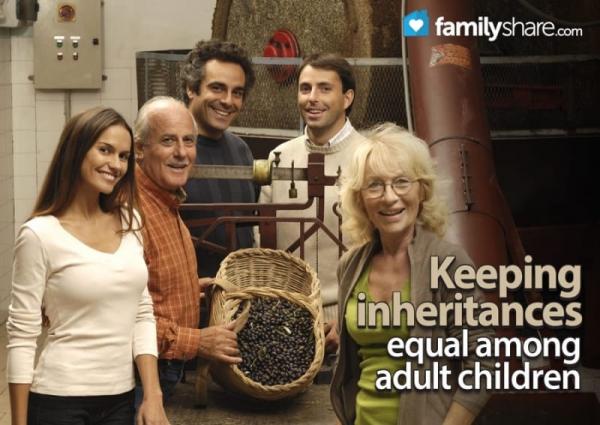
Keeping things equal and fair among children is one of a parent's biggest challenges. Unfortunately, the problem does not go away once children grow up and leave home. Circumstances change as children complete their educations, marry and have children of their own. How does a parent even know where to begin?
Michael Baron, author of the "Your Money"� column found in the Farm and Ranch Guide works with families involved in farming and ranching to transition their estates to the next generation. He writes that equality is not necessarily fairness.
Taking a farm and dividing it equally among siblings does not allow for the success of the farming child any more than taking a piano and cutting it into equal pieces and handing them out allows children to continue developing their talents and abilities. It is necessary to be practical as well as fair (see Take time to add up the numbers to come up with a fair plan).
With this in mind, my husband and I decided it was time to create our estate documents. We know several people who have died suddenly of heart failure at ages similar to ours, and we felt we needed to be prepared. Reading Baron's columns, we knew that it would not be easy. We have seven grown children; several are married, and others are still trying to find their way in the world. Baron advocates the following:
Step One: Take Inventory
Baron created the Confidential Survey as an inventory tool. He has his clients complete the survey before meeting with him. It helps them to see clearly what they have and determine a monetary value for their assets. It has a place for the calculation of liabilities and how they fit in with net worth. On the last page, there is a place for the family to indicate their goals and desires.
We made a list of all our property, financial accounts, vehicles, and household items of value. For our family, this list included a number of musical instruments, including a piano, several trumpets, a banjo, accordion, violin, and some antique silver clarinets. We also have a garage full of tools, an extensive library of books, and furniture for two homes.
Our biggest concern was for the wellbeing of one of our children who has disabilities. We wanted to make sure that her needs would be met should something happen to either or both of us. Since we are her legal guardians, we needed to have a contingency plan for her living arrangements and care.
Step Two: Determine the Value
Before we could discuss what to do with the things on our inventory list, we needed to determine the value of these items. According to Baron, value is not just calculated in monetary worth, but also in emotional investment. Family members may have put time and effort into certain items, making those items more valuable in their eyes. Other items have value because of who originally owned them, such as heirlooms handed down from grandparents.
As we looked at our inventory, we realized that certain family members may have attached greater meaning and worth to certain items. With equity and fairness first and foremost in our minds, we wanted to help our children meet their individual and family needs. Because their talents and abilities vary a great deal, we could see that the distribution of our assets should follow a particular path.
Step Three: Discuss the Future
Baron helps his clients prepare for a worst case scenario. In our case, if something happened to both me and my husband, who would care for our dependent daughter? We discussed this issue with our children, and the oldest in the family stepped forward, expressing willingness to have her move in with them should the necessity arise, and the second oldest agreed to be contingent.
Once this was determined, we were able to decide which of our assets were required to provide a monetary foundation that would generate income for her lifetime. These were labeled to be put into a trust with the two oldest living children (at any given time) as trustees. They both agreed to the responsibility.
We also looked at the possibility of one or both of us becoming physically unable to care for each other or our estate. Power of Attorney documents, both financial and medical were provided as part of our estate planning package. These allowed us to name someone to take care of our estate in the event that we were unable to do so for any length of time.
Step Four: Make a Plan
We found an estate planning website (LegacyWriter.Com) that allowed us to create legal documents ourselves for a nominal fee. The step-by-step process was simply a matter of entering the information that we had decided upon during our inventory process. Once the documents were created, we were able to download them to our computer and edit them as needed.
The online program allowed for specific gifts to be given in our individual wills. We realized that each of our children had unique talents and abilities that matched the various items in our assets. These we distributed accordingly. We also designated certain heirloom items for each child. We wanted each to have something that had belonged to one of their grandparents.
We talked with our children about what they would be receiving and how they felt about the process. Thankfully, our children were willing to accept our decisions, and felt that we were being fair. Since we took into consideration their unique situations during the process, they seemed to be pleased with the outcome. Time will tell!

